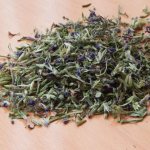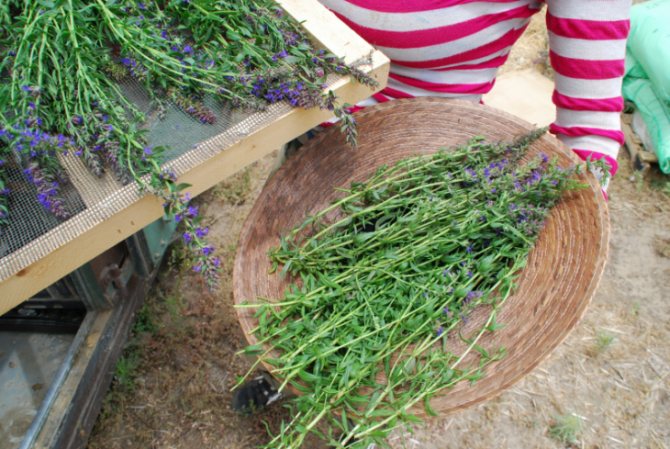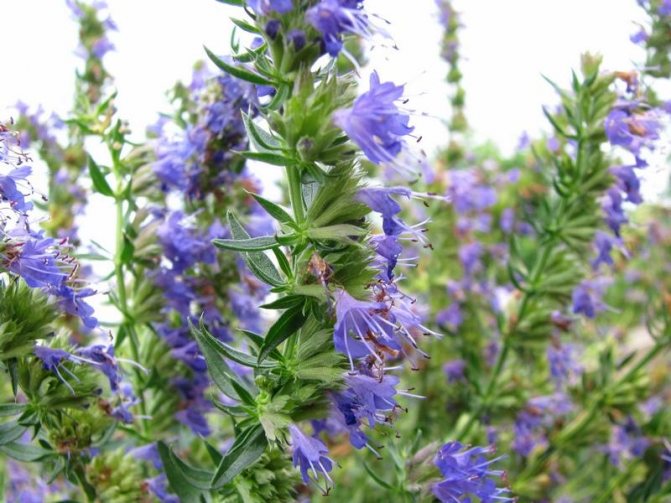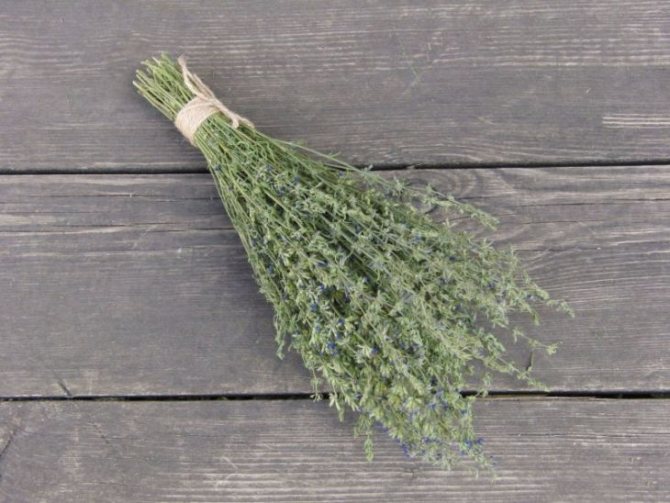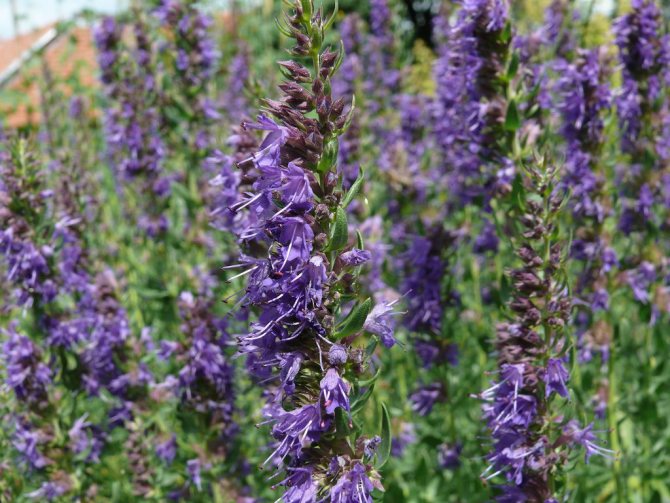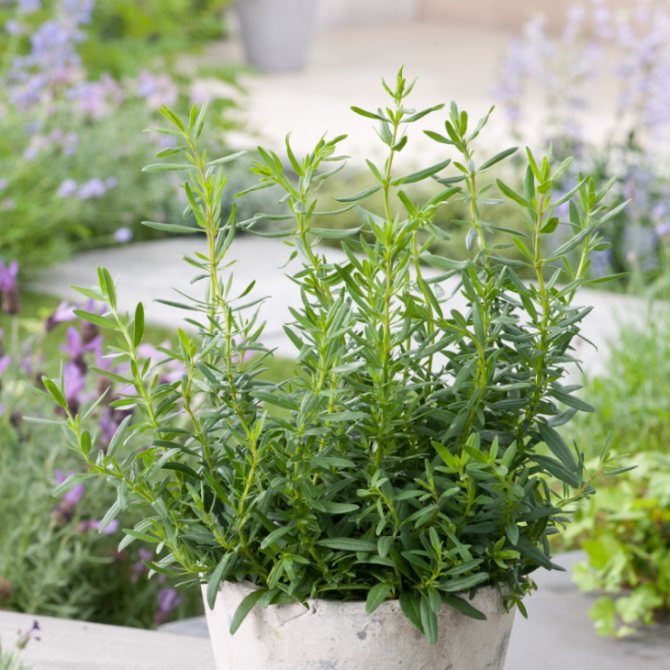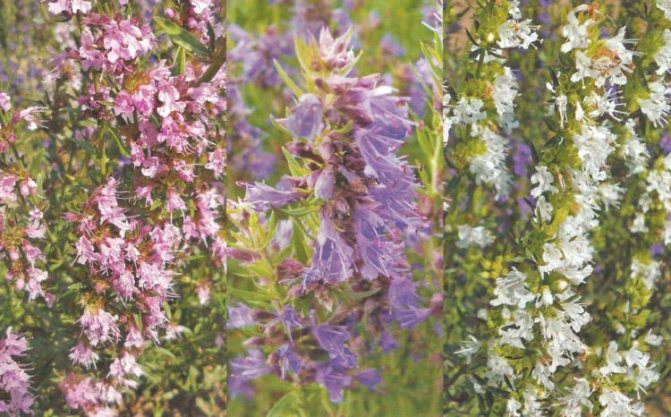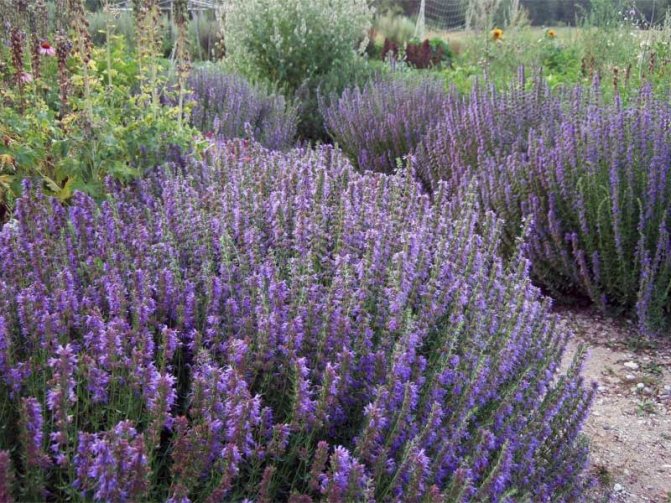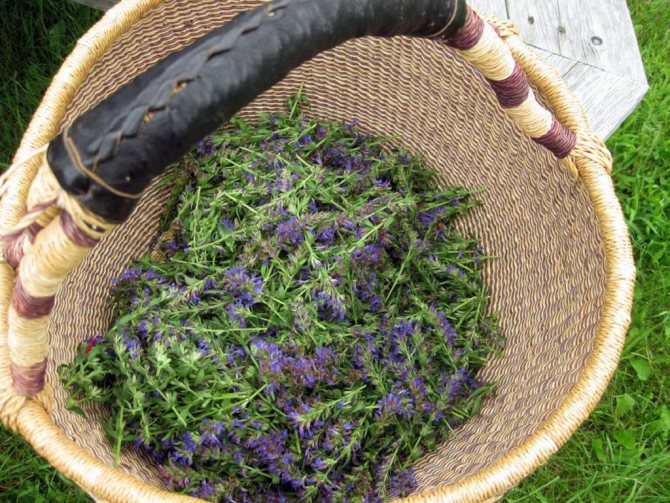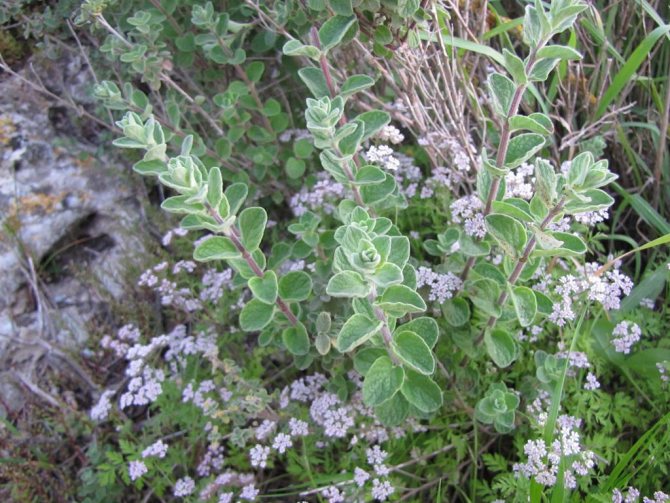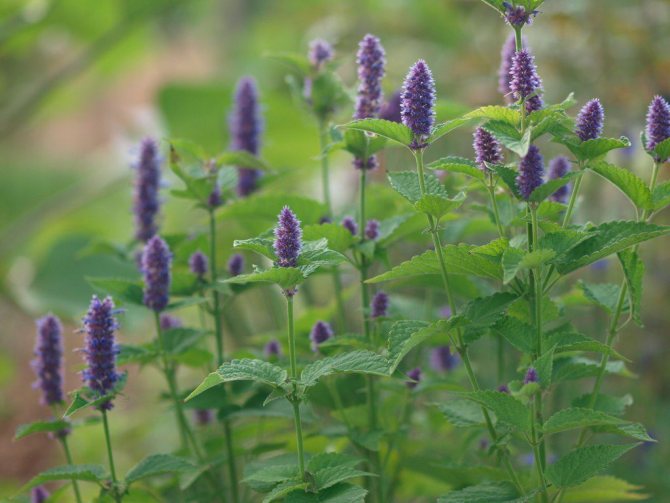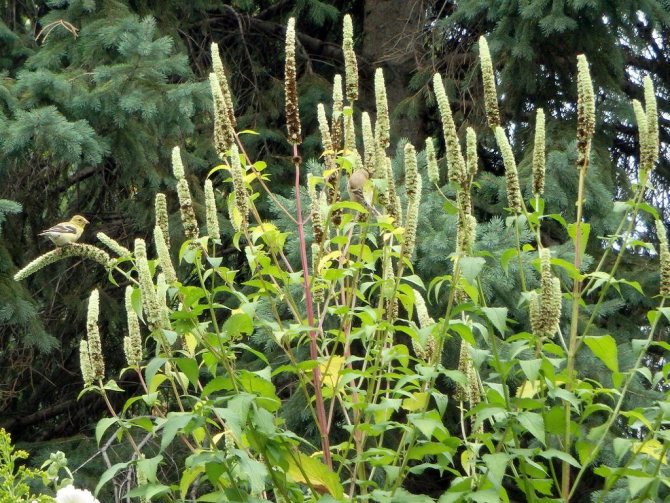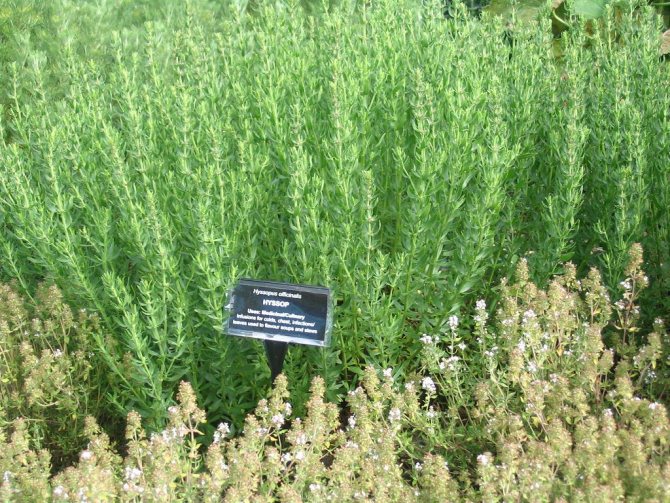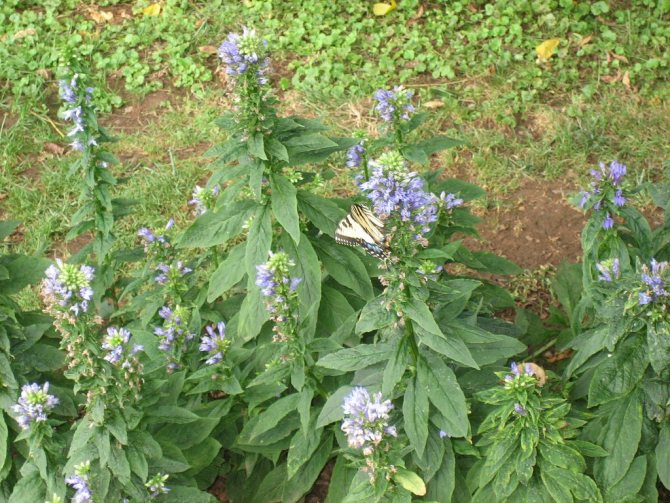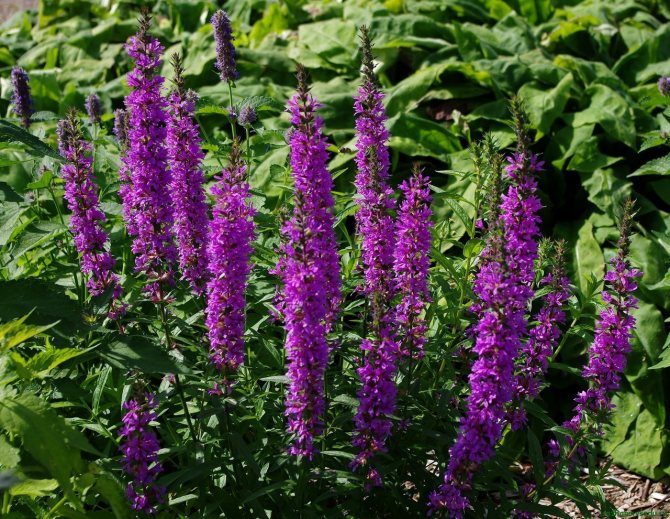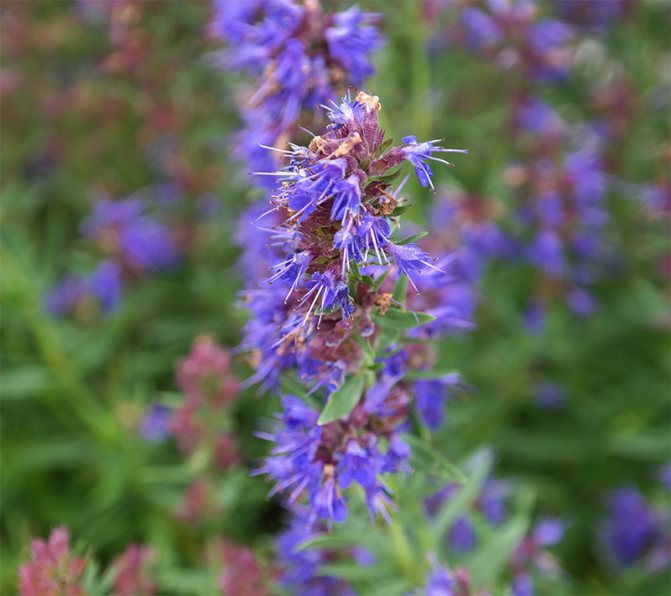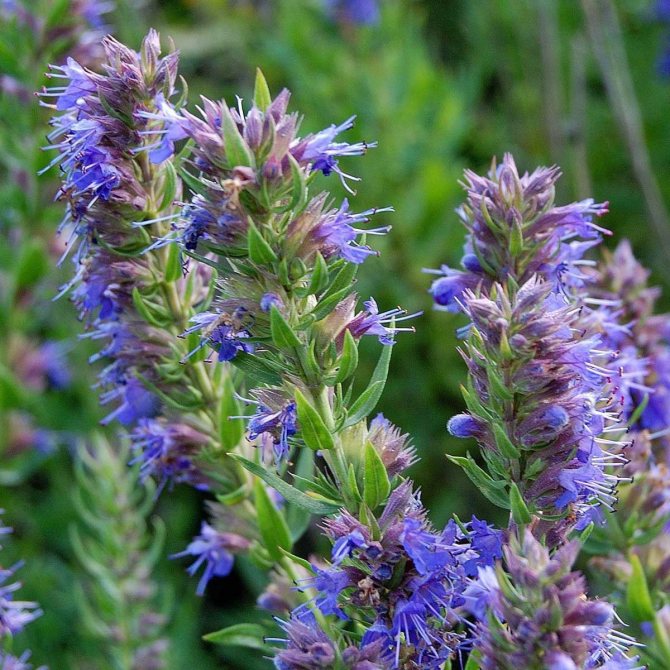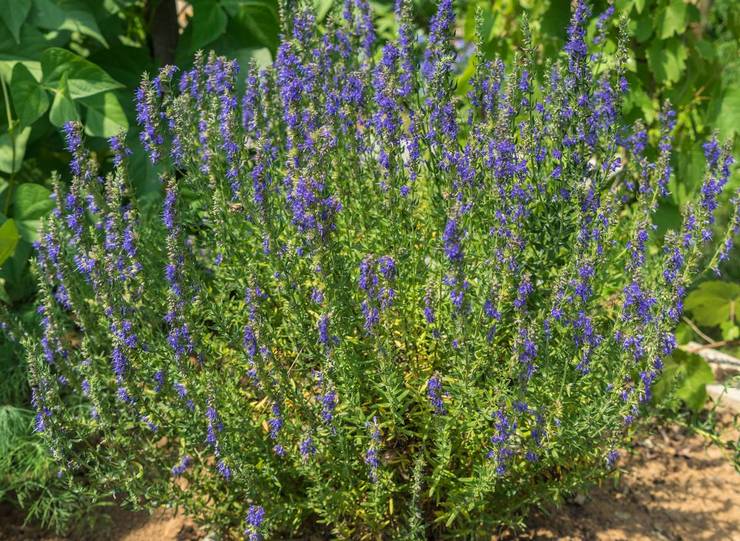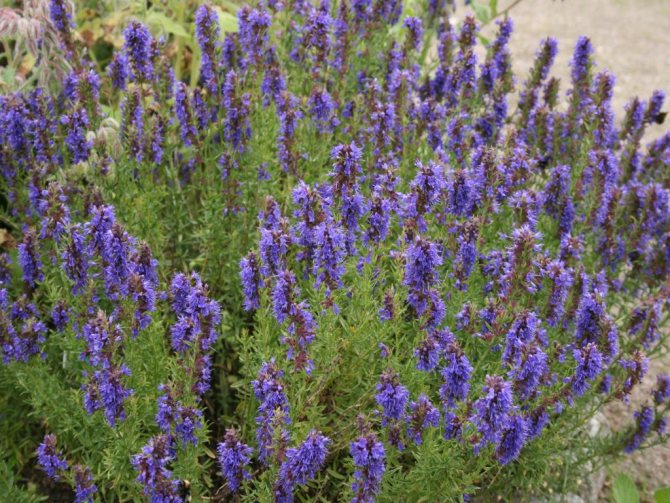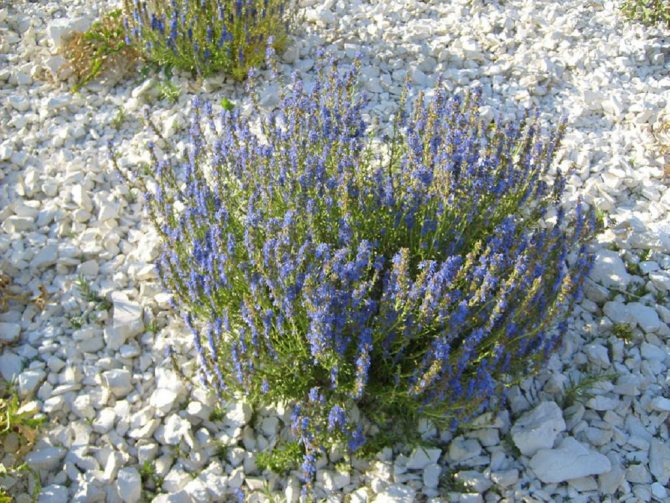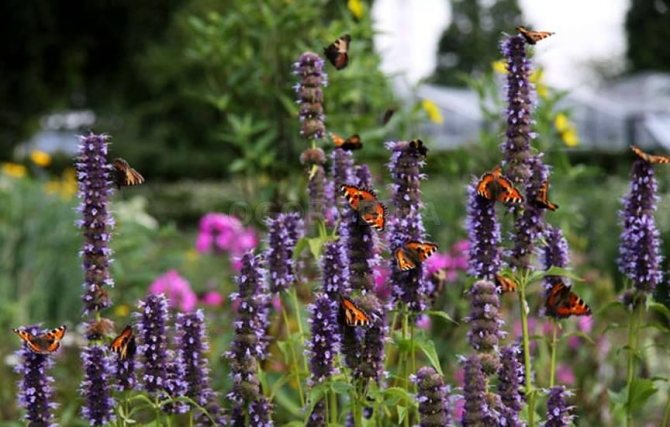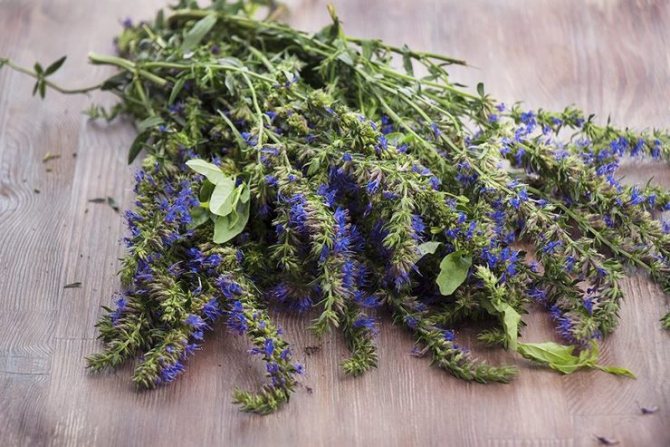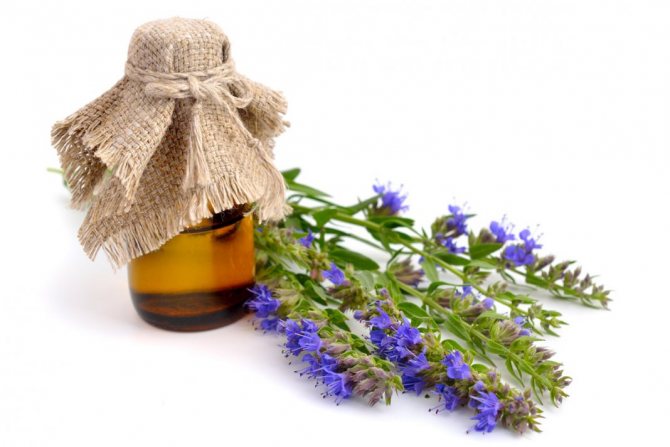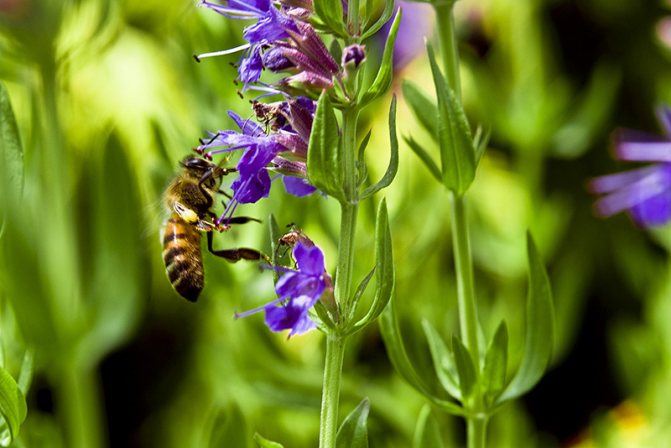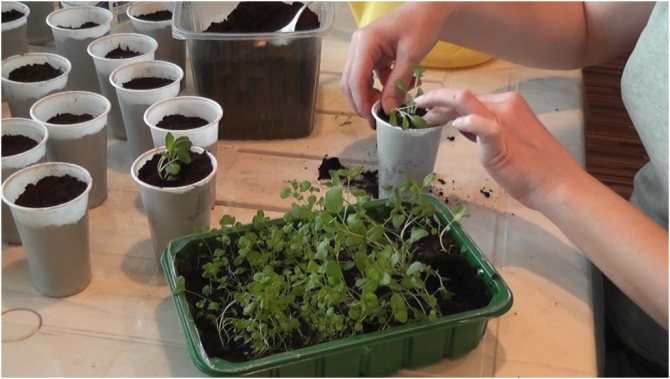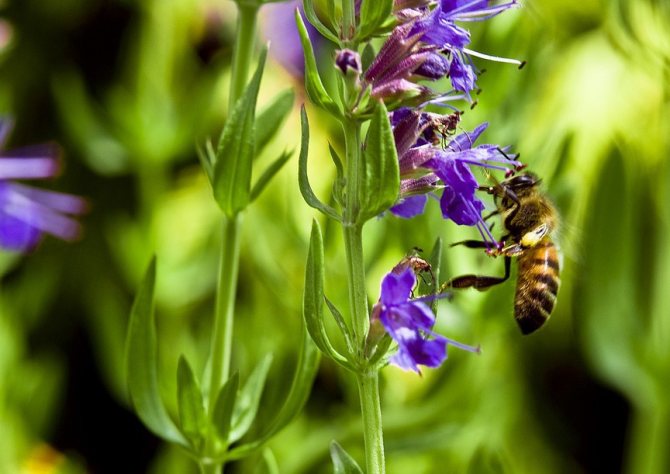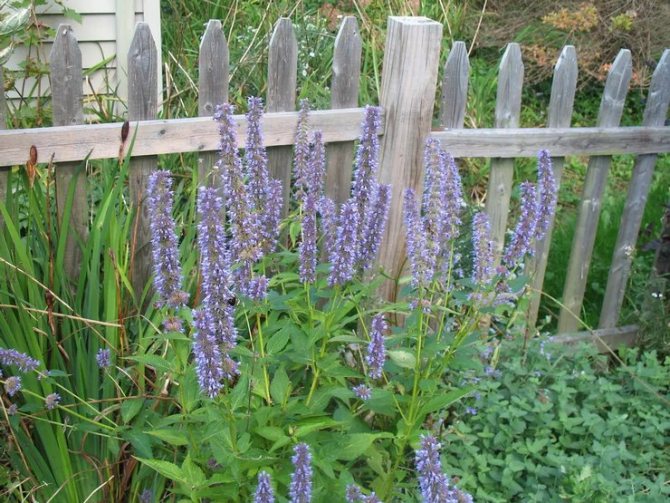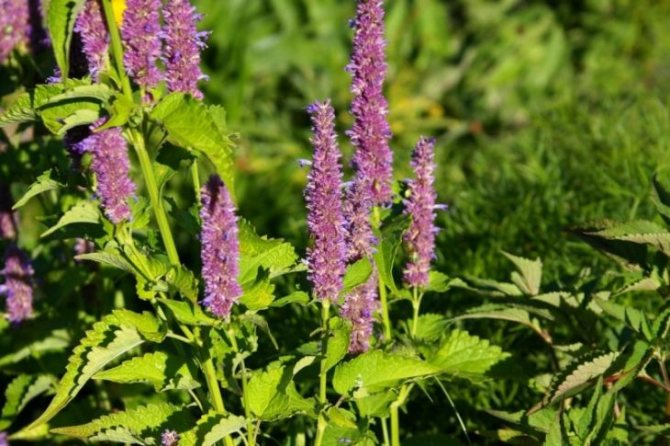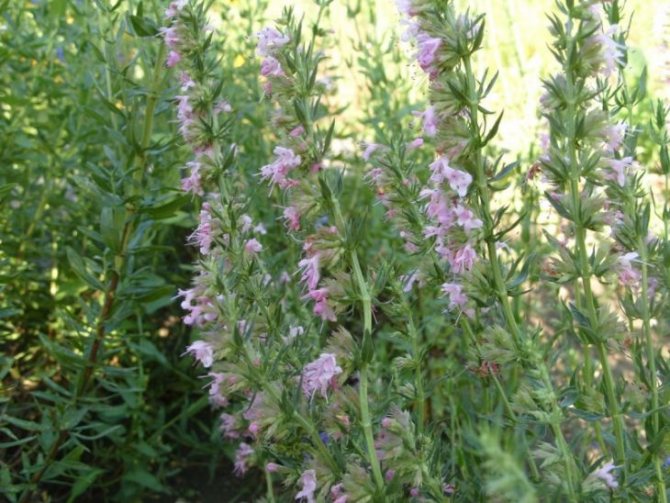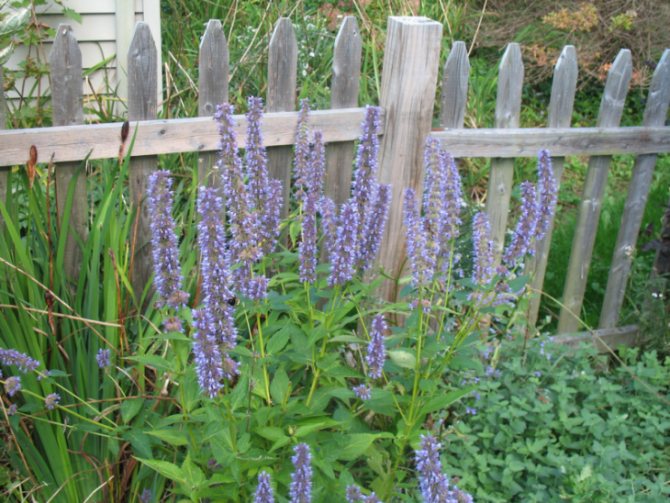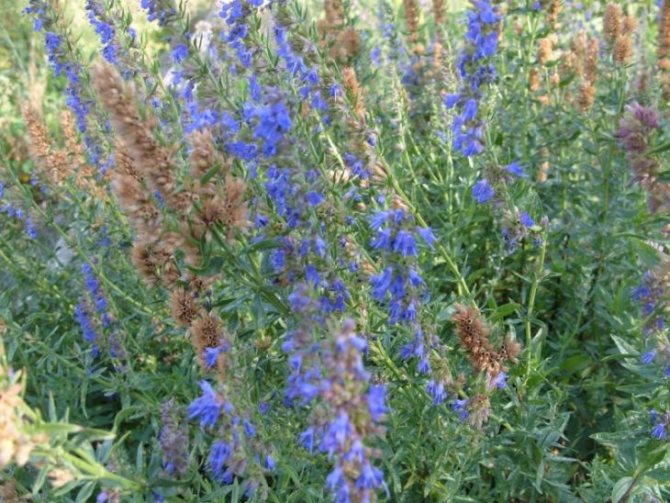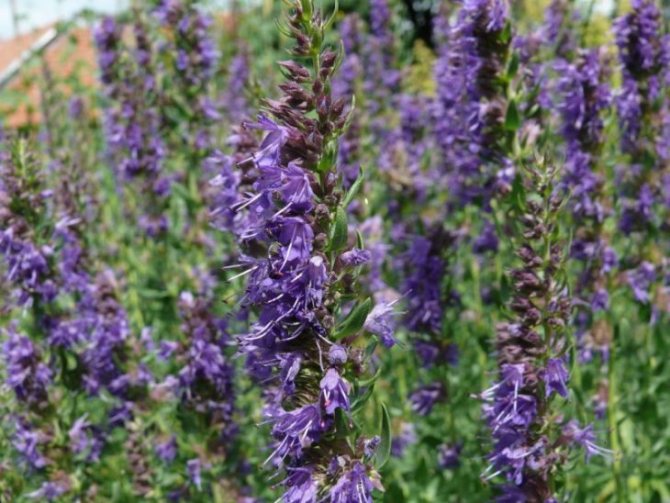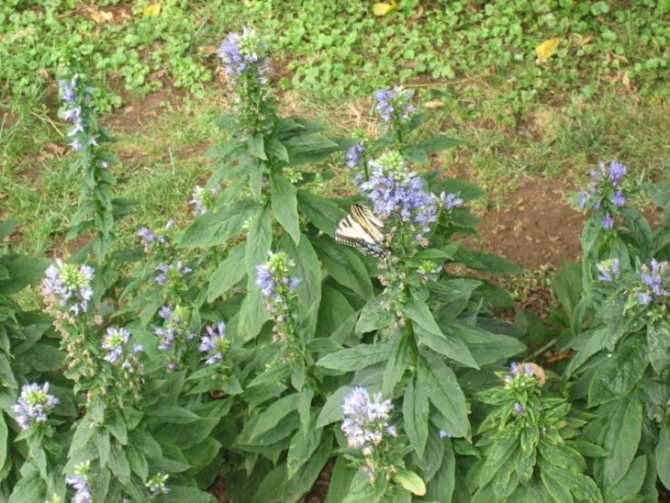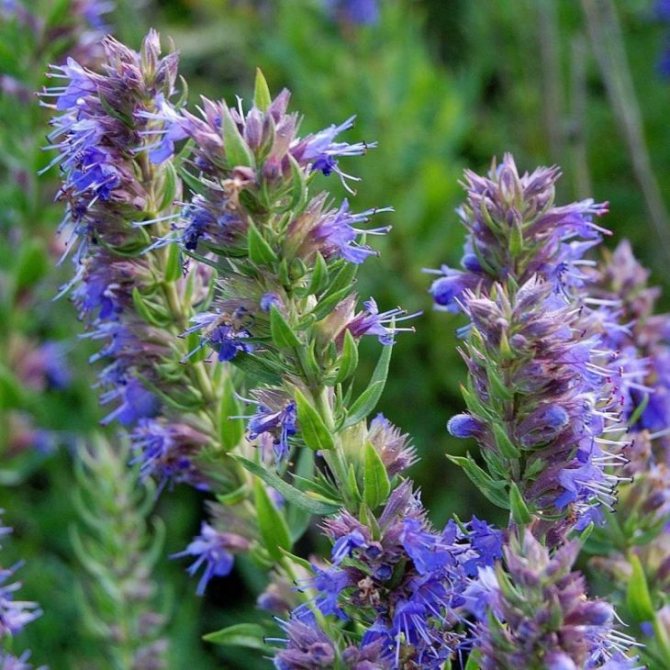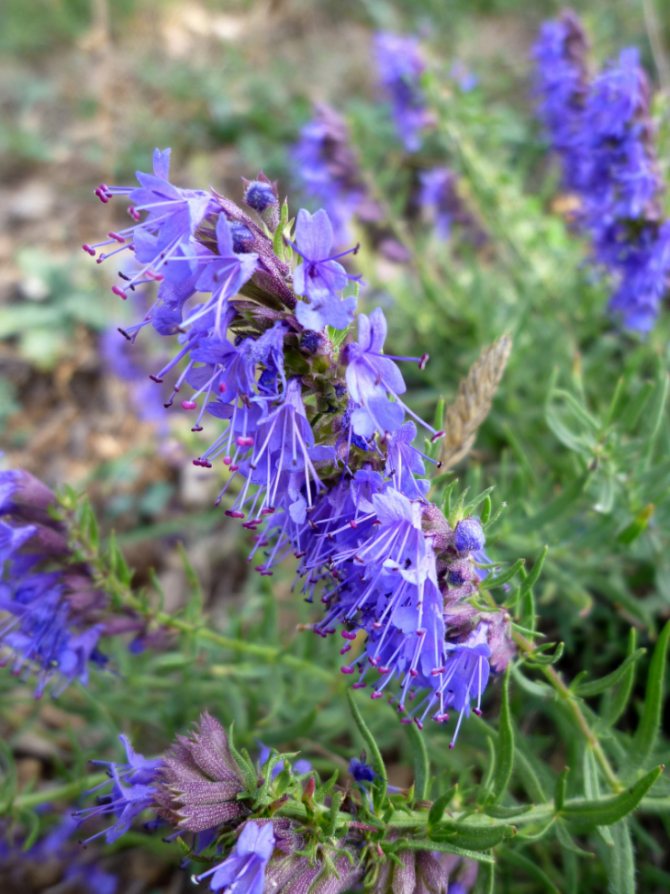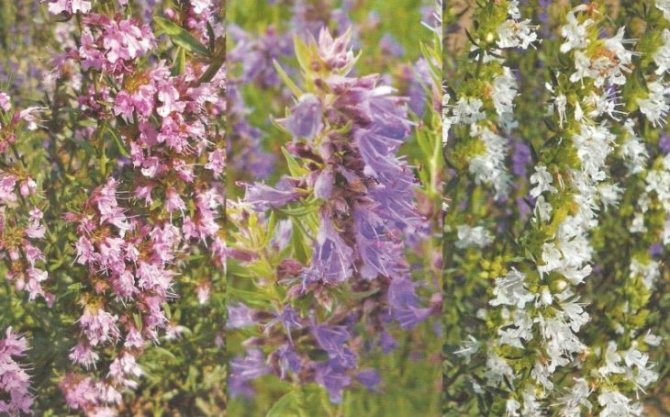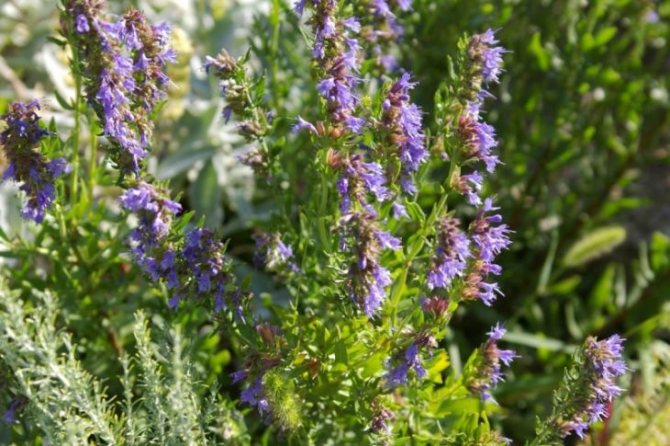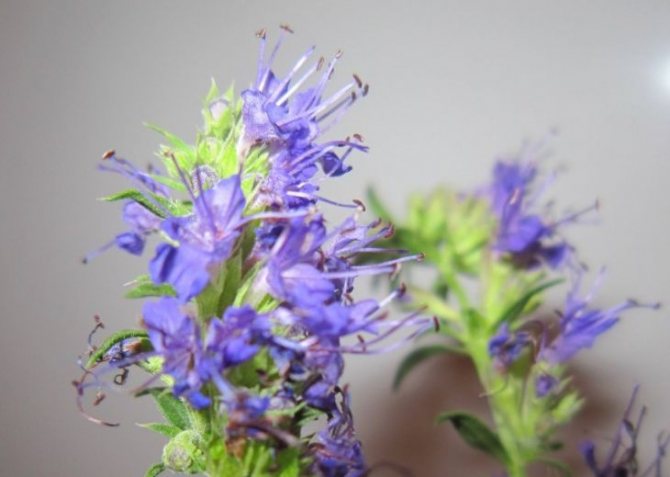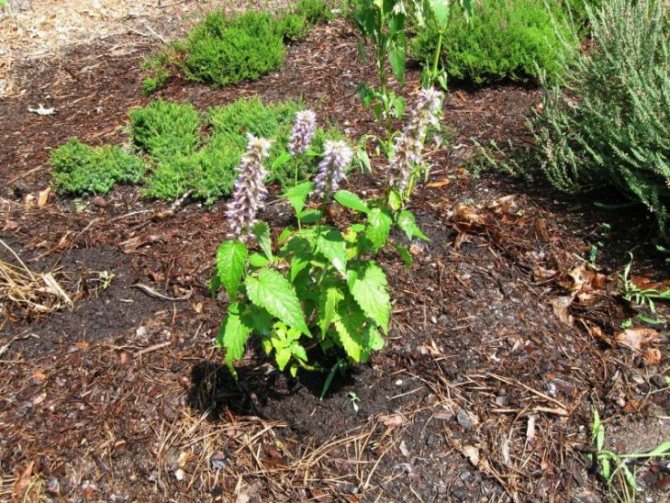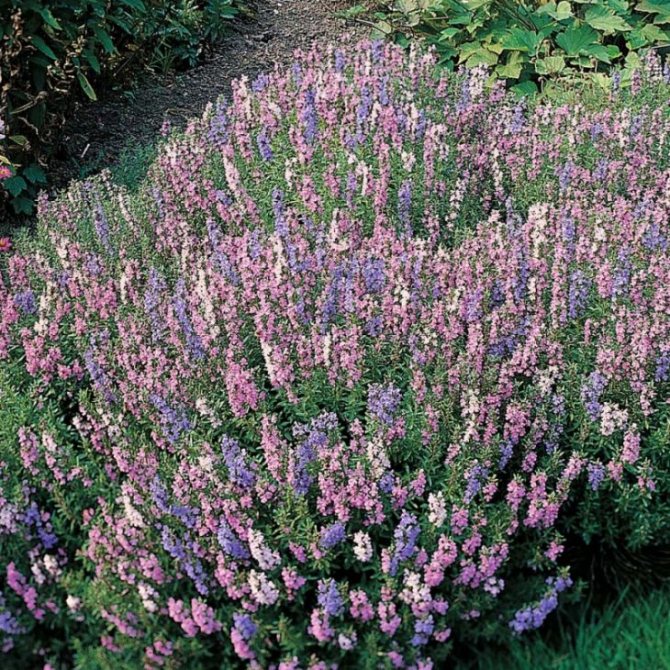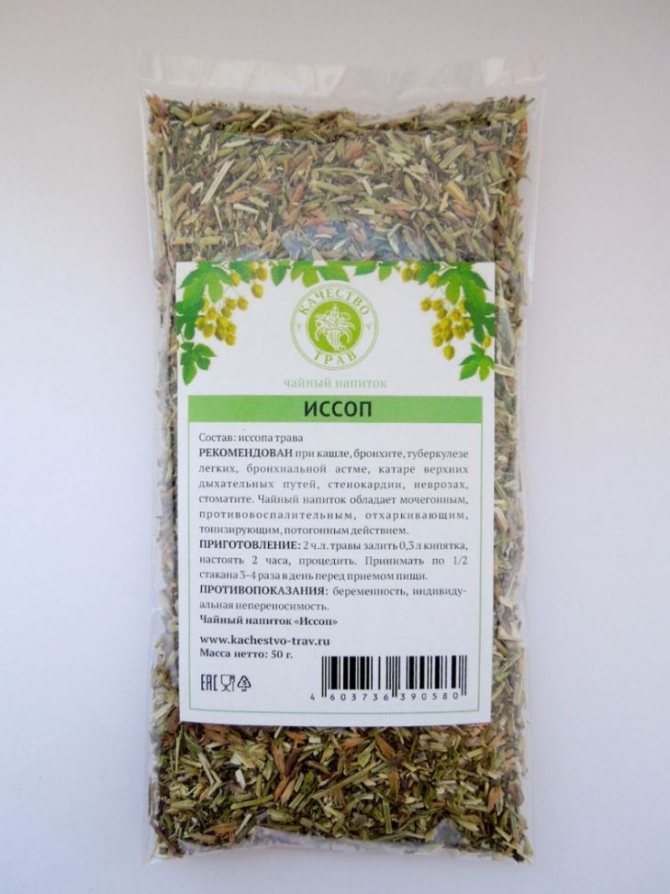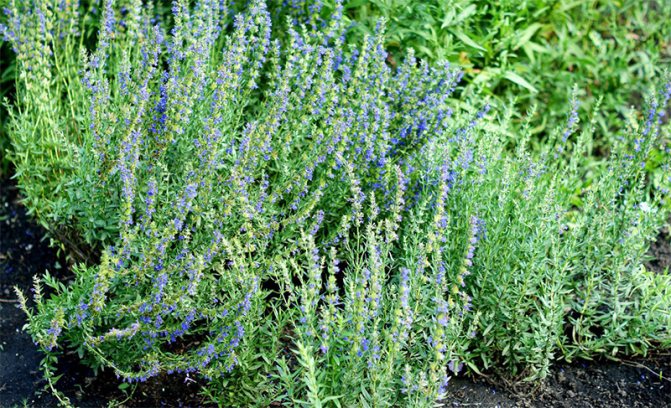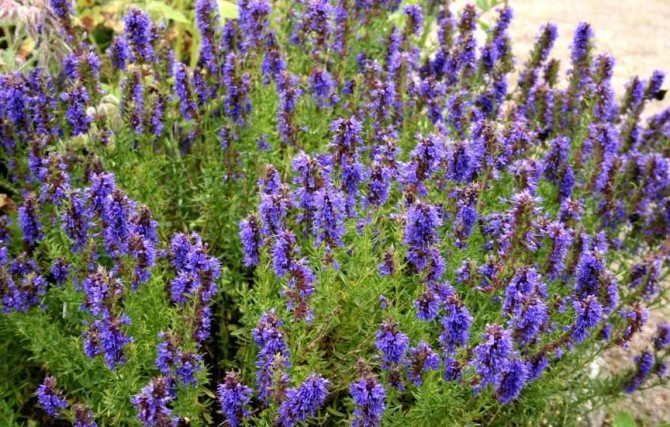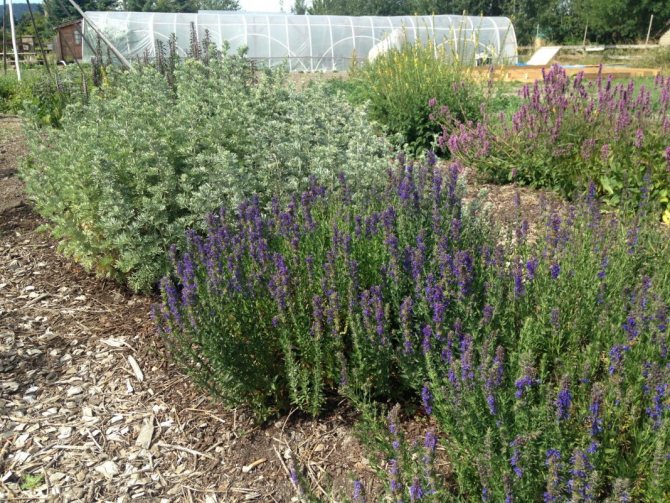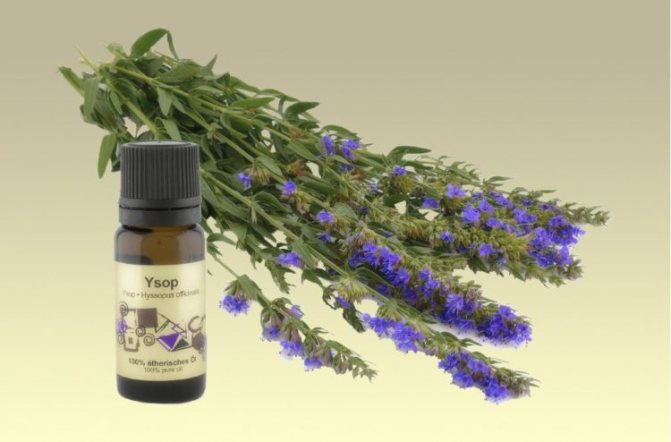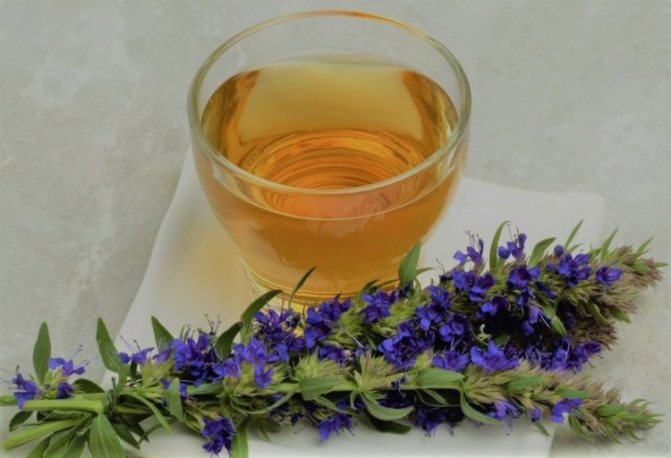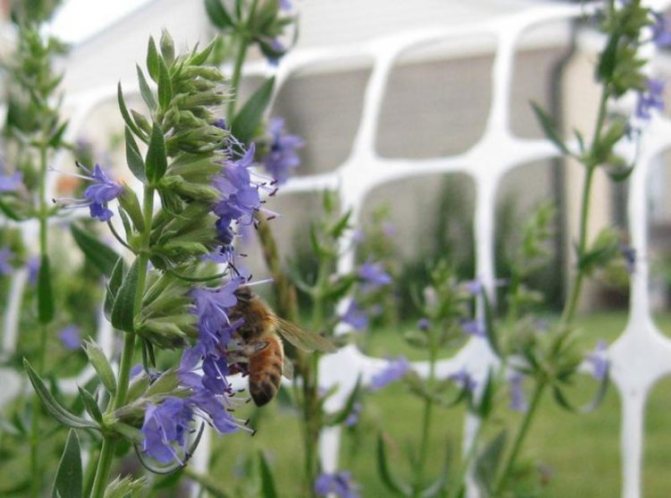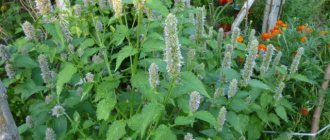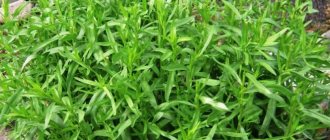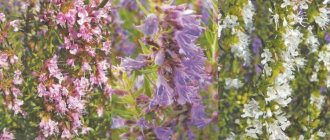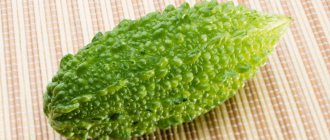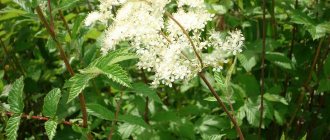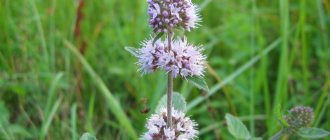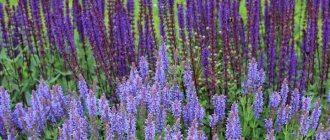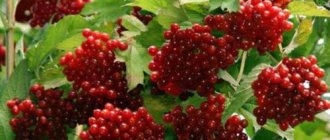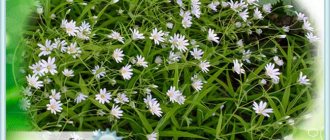Hyssop officinalis is ranked among herbal healers that can cope with some health problems.
This herb was known in ancient Greece as a medicinal plant. Hyssop is also called blue St. John's wort, bee grass, forest hyssop.
- 1 Plant description
- 2 Types of hyssop
- 3 Healing properties of hyssop
- 4 Growing hyssop medicinal
- 5 Caring for hyssop officinalis
- 6 Collecting medicinal hyssop
- 7 Hyssop in cooking
- 8 Hyssop in landscape design
Description of the plant
In natural habitats, hyssop can be found on rocky slopes and hills in the Mediterranean. The herb is used for outdoor cultivation as a decoration, due to its long flowering. Hyssop officinalis can be grown in Russia and in the Caucasus Mountains, in southern Ukraine and Central Asia. To preserve all medicinal properties, you need to change the place of growing the plant every five years.
The hyssop herb is a perennial shrub that grows up to 80 cm in height. The root of the medicinal plant is tap and woody. The stems are tetrahedral, they have lanceolate leaves. At the base of the plant, the leaves are larger, but their size decreases upon reaching the top.
Interesting! Hyssop is a cross-pollinated plant, if several varieties are grown nearby, they should be isolated from each other whenever possible.
Hyssop blooms are collected in spike-shaped inflorescences, which are located at the ends of the stem, the flowers are bright blue, can be white, pink and purple, but such colors are rare. When the hyssop has faded, you will notice the appearance of seeds.
Procurement and storage
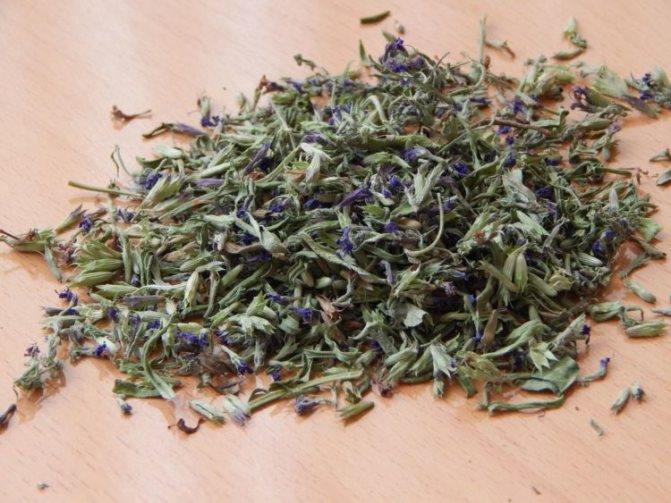
The ground parts of the plant are harvested at the very beginning of flowering, until the stem is stiff. Then the collected parts are dried in the shade. For seasoning, collect the petals of fully blossoming flowers. This is how a bright aroma of seasonings is achieved. When dried, the color of the petals is preserved, and the seasoning can be made multi-colored. Only dry pink, white and blue petals separately.
The shelf life of the dried herb is short; after six months, the dry plant loses all its medicinal qualities, even if it is hermetically sealed.
Hyssop species
The plant has very few varieties, but among them there are those varieties that are grown most often:
- Ordinary or medicinal hyssop - it is a shrub no higher than 80 cm. Its leaves are small, and the flowering is white or pink, collected in inflorescences. Flowers stay on the plant all summer, at the end of which seeds begin to form.
- Hyssop chalk can be confused with a medicinal species. It grows in height up to 50 cm, in places with chalk deposits. During flowering, the plant has a pungent aroma with balsamic notes. You can meet chalk hyssop on the slopes of mountains and hills.
- Anise hyssop - it is a bush, 0.5 m high. The foliage has an anise smell, which is even more noticeable if you grind it. Blue flowers can be used in cooking as a condiment.
- Hyssop honey plant used in apiaries, its honey has a good taste and medicinal properties.
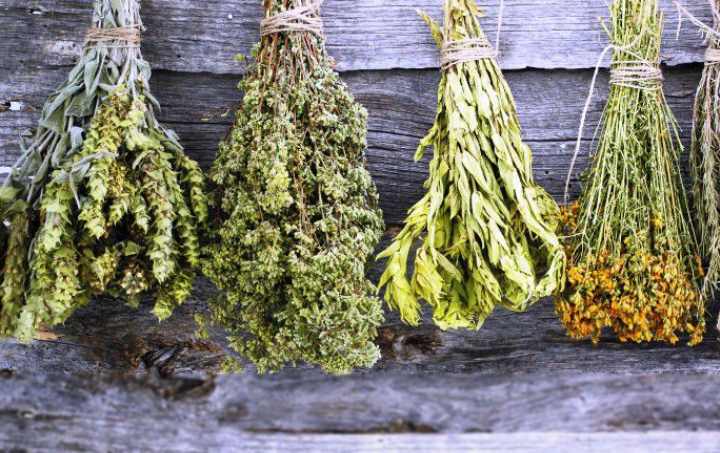

Blue St. John's wort: useful qualities
Hyssop or blue St. John's wort has many beneficial qualities. It is very often used as a coughing agent, for wound healing and against worms.As for the preparations made from this shrub, they include antimicrobial and antiseptic properties.
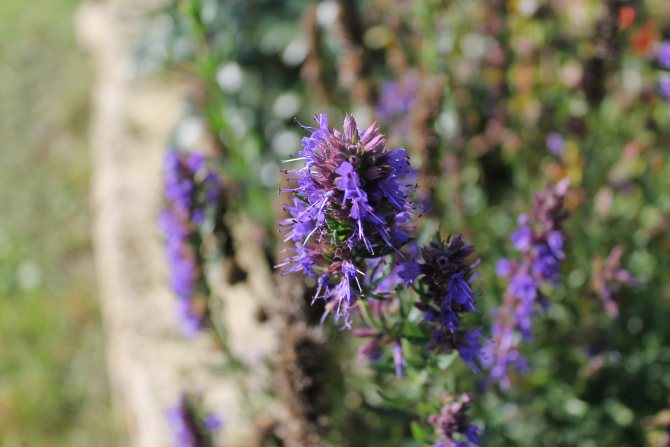

In folk medicine, hyssop is used to treat:
- Bronchial asthma;
- Chronic bronchitis;
- Cough;
- Respiratory catarrh;
- Neurosis;
- Tuberculosis;
- Diseases of the oral cavity;
- Chest pain;
- Angina pectoris;
- Impaired digestion;
- Diseases of the gastrointestinal tract;
- Sore throats;
- Rheumatism;
- Inflammation of the urinary tract;
- Conjunctivitis;
- Ran;
- Worms;
- Bruises;
- Ulcers;
- Burns;
- Stomatitis;
- Climax;
- Inflammation of the eyes;
- Constipation;
- Chronic colitis;
- Anemia;
- Methiorism;
- Joint diseases;
- Hoarseness of the voice;
- Spleen diseases.
And this is not the whole list. No wonder a plant like St. John's wort is called a cure for a hundred diseases. Almost always, this shrub can help to cope with the disease. If you believe, then this flower, it can be seen in the photo, has not only medicinal character and useful properties, but its description claims that it has magical properties and is widely used in cooking. The most important thing is to know how to use it.
Healing properties of hyssop
Important! Hyssop contains a large amount of substances with an antibacterial effect, so the plant is an antiseptic.
In addition to antiseptic properties, the plant can be used in other areas of medicine:
- Highly concentrated vitamins and acids have a positive effect on the central nervous system. The plant has a sedative effect, reduces nervous disorders, and does not cause drowsiness. The medicinal herb has a positive effect on memory properties and improves attention.
- Cough hyssop is often used, it promotes the excretion of phlegm by decreasing its viscosity. The presence of essential oil in hyssop increases the properties of the plant, has antimicrobial and anti-inflammatory effect.
- Hyssop affects the functions of the gastrointestinal tract, it improves digestion, has a healing property on the pancreas. The use of the herb gives a mild choleretic and laxative effect.
- Stimulating blood circulation and relieving spasms increases blood flow to the kidneys, which is good for the genitourinary system.
- Thanks to phytoncides and essential oils, hyssop has the ability to accelerate the healing of skin lesions.
Hyssop contains cineole, which treats various suppurations and staphylococcal infections. It has a positive effect on the mucous membranes of the eyes and mouth.
The use of medicinal hyssop is not particularly common in medicine, but it is possible in herbal medicine. Thanks to him, the prevention of many diseases associated with the genitourinary, nervous, respiratory and digestive systems is going well.
Along with many useful properties, the medicinal hyssop also has contraindications:
- use in chronic renal diseases is undesirable;
- with severe nervous disorders and illnesses, which may be accompanied by convulsions or seizures;
- it is advisable to stop using hyssop for pregnant women and children under 5 years of age.
Indications for use: anise hyssop
Despite the fact that the plant has a wide range of positive qualities, before using it, it is imperative to find out about all existing contraindications.
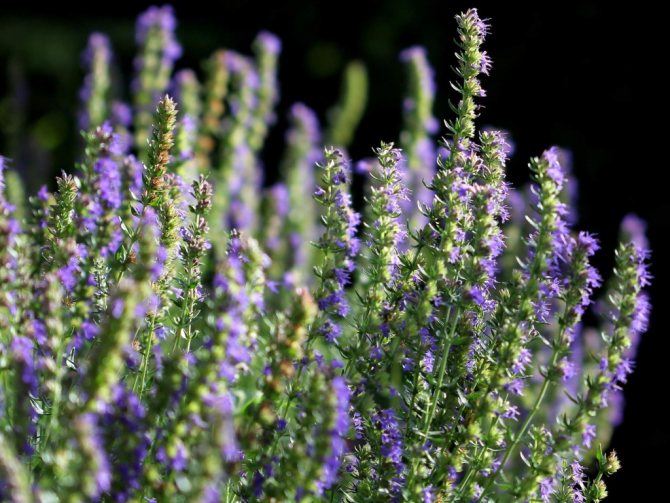

Hyssop is not recommended for:
- People with high acidity;
- With nephritis and nephrosis, as there may be side effects from prolonged use;
- Pregnant women, since a decoction from the plant affects the reduction and termination of lactation;
- For people with neuropathy and epilepsy, due to the increased concentration of essential oils, decoctions can exacerbate ailments;
- It is not recommended to use a decoction for intestinal upset and diarrhea;
- Carefully enough, you should give the tincture of the published plant to adolescents and children.The oils that are in the composition can greatly affect the condition of the child.
In addition, it is strictly forbidden to give tincture from this shrub to small children.
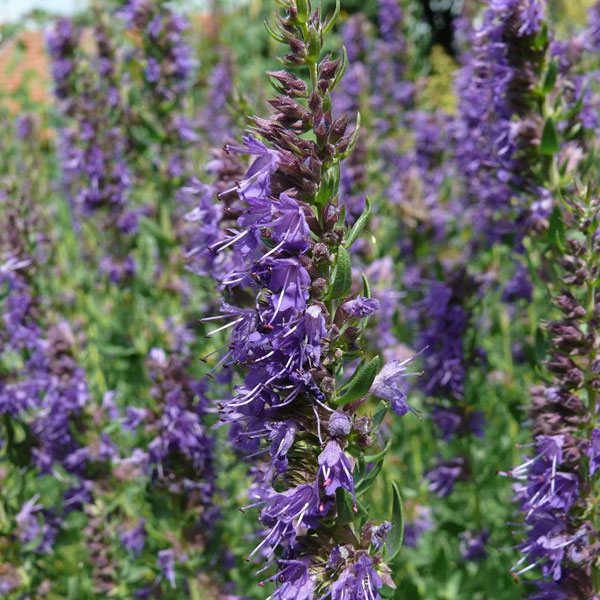

So, summing up, it remains to add that a plant like hyssop is a kind of miraculous herb. It is very often indicated in various books and in the writings of great figures. Today, St. John's wort is used not only in folk but also in traditional medicine as an anti-inflammatory and antiseptic agent. And the effectiveness of the healing action has been proven by many peoples and generations.
Growing hyssop medicinal
It is very simple to grow hyssop, its planting is possible on minimally fertile soils. This can be done by seeds, seedlings or propagated by cuttings.
Hyssop cuttings carried out before flowering begins. In this case, shoots no longer than 15 cm are cut from the main plant. They must be treated with a stimulant, and then planted in a container with a sand-earth mixture. The surface of the soil can be sprayed or watered with a watering can with a nozzle. The cuttings take root within a month, after another 30 days they can be planted in the open field.
Dividing the bush is possible, if the specimen has reached 4 years of age, it is better to carry out the procedure at the beginning of spring, carefully separating the roots with a sharp instrument.
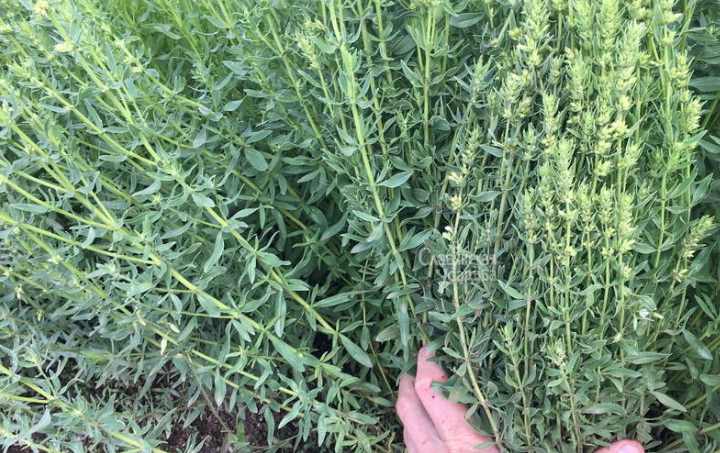

Planting hyssop carried out by seeds, they can be sown immediately in the right place, or you can grow seedlings. Direct sowing of seeds is best done when the threat of frost passes, in the spring. Sowing in early spring should be accompanied by covering the place with a film.
Seedlings need to be grown in containers covered with plastic or glass to help maintain moisture. After the appearance of the first leaves, the seedlings are dived and planted in separate containers. They can be planted in open ground when the seedlings gain strength, the soil must be fed before that.
Harvesting hyssop
Herbalists advise to collect hyssop during full bloom, at sunrise, in the first phase of the moon - then it has full healing power and will bring maximum benefits.
- Before you cut the grass, be sure to say hello to her and ask permission to collect her. For medicinal purposes, cut off the flowering tops;
- To properly dry the grass, collect it in small bunches and hang it in a ventilated place, but away from the sun;
- It is better to store hyssop in a hermetically sealed container.
In our country, the plant has long been grown in industrial conditions, but this is done mainly to isolate the most valuable essential oil from it.
Hyssop medicinal care
It is quite easy to care for plants if you regularly water and loosen the soil. The mail should be checked periodically and weeds removed. You need to water the plant no more than twice a month, focusing on the weather conditions.
Adult hyssop tolerates frost well and is almost not exposed to diseases and pests. To maintain the appearance of the medicinal hyssop, it must be cut off, this gives an impetus to the formation of more inflorescences. It is necessary to cut the bushes in the fall to a height of 15 cm. It is important not to allow self-seeding of hyssop, you need to cut off the inflorescences when the seeds turn brown. Cut inflorescences are laid out on the surface until the seeds are fully ripe.
Interesting! Hyssop officinalis can be used as a deodorant. It handles bruises and bruises well.
Harm and contraindications
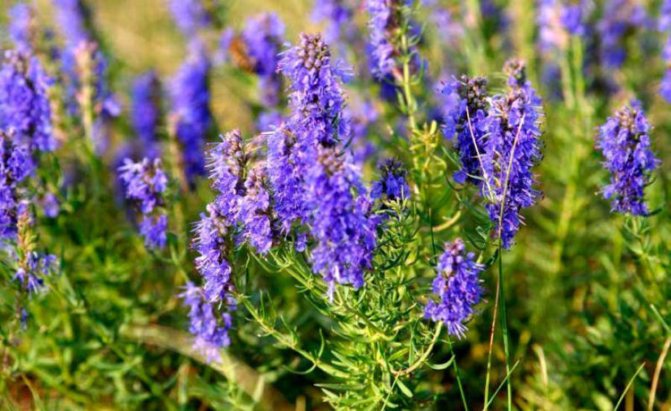

Hyssop should be used with caution, as it is considered a weakly poisonous plant, and all the benefits of using it in an inappropriate dosage or for a longer period than prescribed by the doctor may come to naught.
There are a number of people for whom the use of blue St. John's wort is contraindicated:
- epileptics;
- children under 12 years of age;
- patients with acute renal failure;
- with hypertension;
- people with high acidity;
- pregnant women and women during lactation.
Collection of medicinal hyssop
The main part of the plant, which is used in folk medicine, are inflorescences and shoots, they must be collected at the initial stage of flowering.
- only young apical parts are subject to cutting; woody shoots should not be taken;
- the collected material must be examined and damaged particles and possible parts of other plant crops must be removed;
- it is necessary to dry hyssop medicinal by tying it in small bunches in a suspended state, in the shade;
- if drying takes place indoors, it should be well ventilated;
- with artificial drying, to preserve the ether, the drying temperature should not exceed 40 degrees;
- When the hyssop is dry, it needs to be shredded and folded in paper bags for storage.
Attention! You can store hyssop medicinal for no more than 2 years, in the following years it begins to lose its medicinal properties and essential oils.
What is the herb made of?
Hyssop medicinal herb is very popular due to the substances that are included in its composition. They are also active in the fight against ailments.
Essential oils. This substance is widely used for medical purposes. By rubbing with St. John's wort essential oil, immunity is increased. This option is used for tonsillitis, bronchitis and asthma.
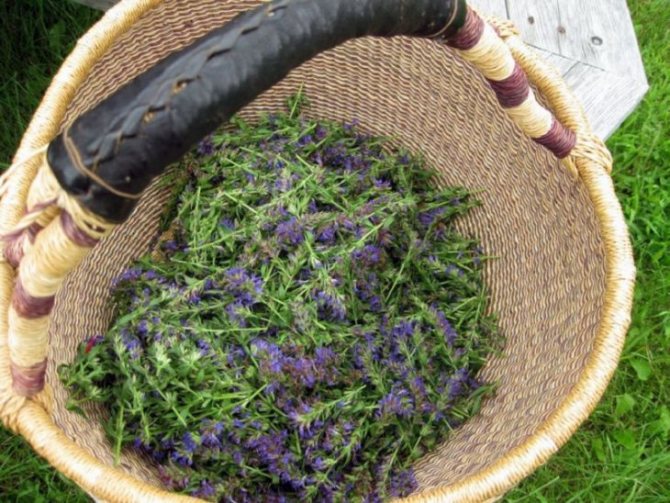

In order to obtain the essential oil, the leaves of the herb must be distilled with steam. In addition, the oil has a pleasant aroma and is used for psychological purposes for general soothing and aromatherapy.
Read here! Common goldenrod - healing properties, medicinal qualities, indications and contraindications for the use of goldenrod (120 photos)
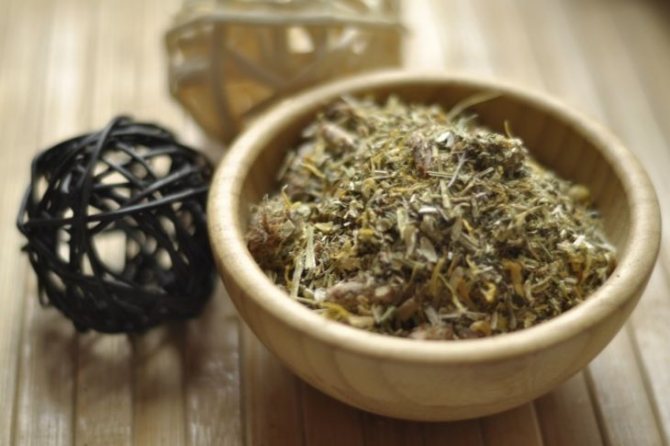

This substance is also applied to skin lesions, acne and warts.
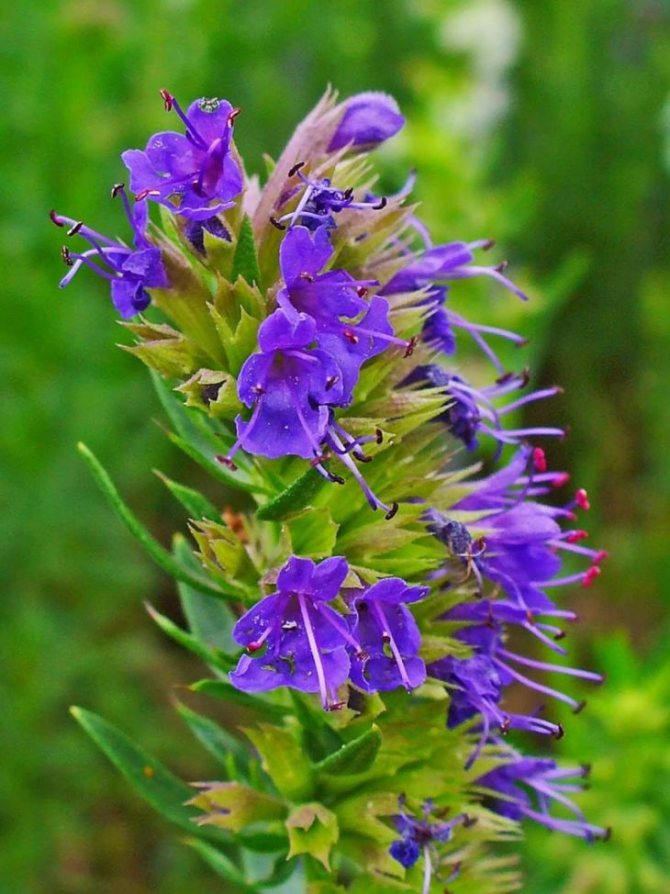

Tannins. They help to normalize bowel function and remove toxic substances.
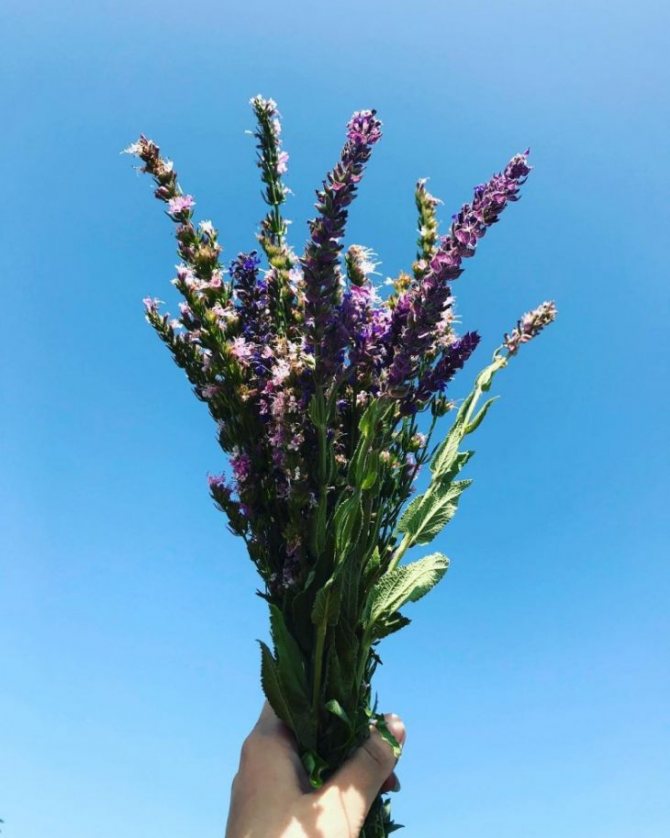

Diosmin. A natural medicine that has a positive effect on the structure of veins and blood flow in general.
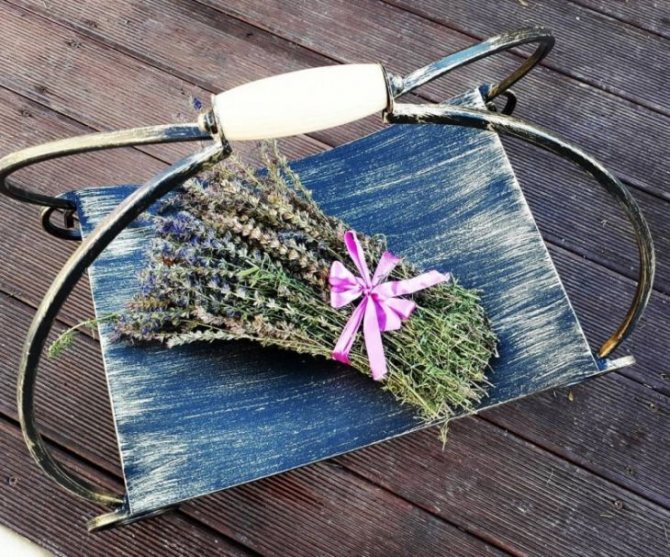

Issopin. Substance with antioxidant effect. Allows you to activate the body's enzymes, slows down the aging process and prolongs life.
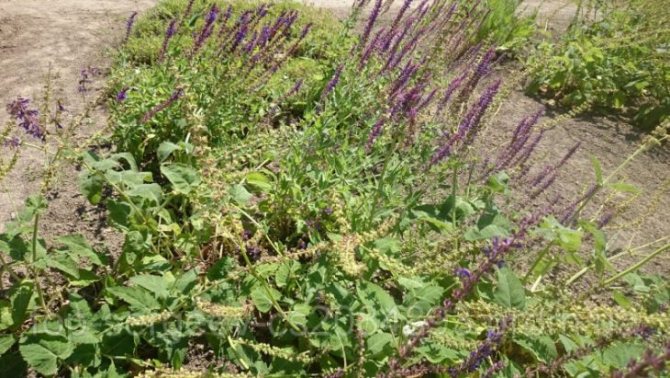

Hesperidin. It also allows you to normalize the structure of the veins and helps with venous pathologies.
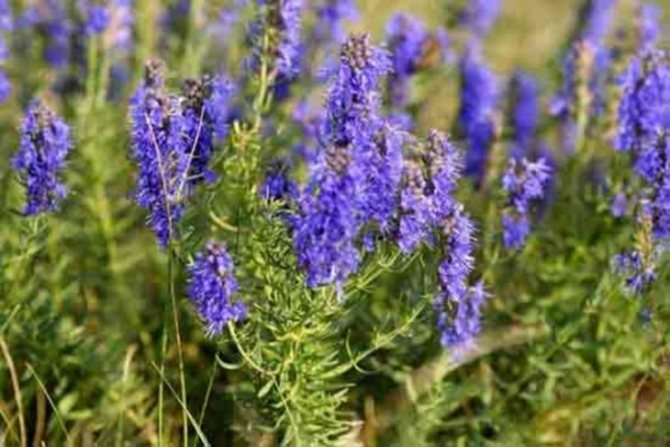

Resins. In different forms, they have different effects on the body. They can act as a laxative, bactericidal, wound healing and antiparasitic agent.
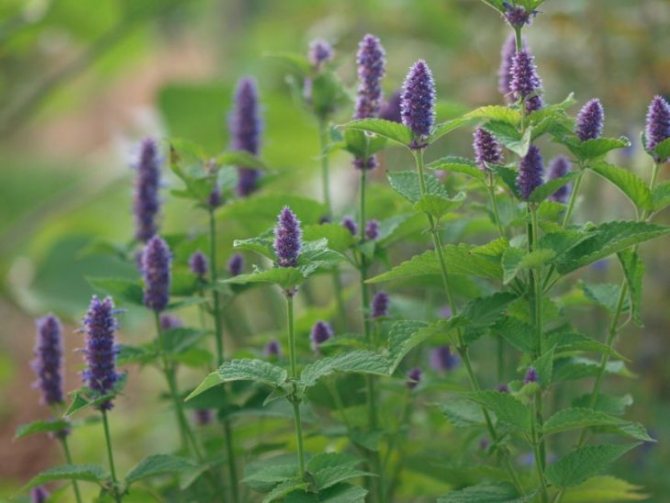

Vitamins and minerals. Contained in the composition of the plant in huge quantities.
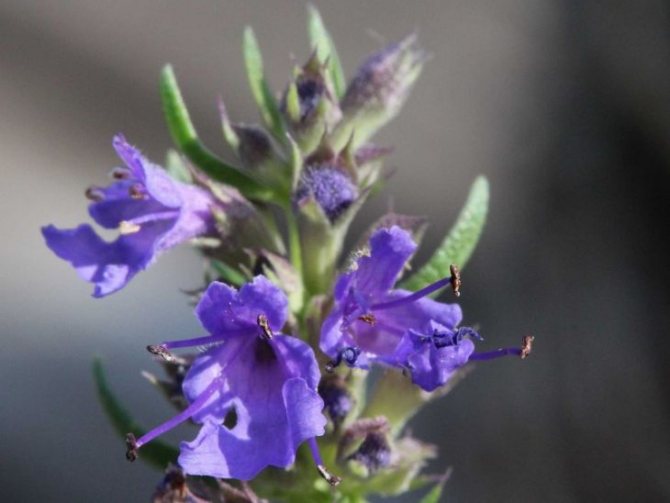

The price of hyssop herb can be different, but it is not high and everyone can afford such a remedy.
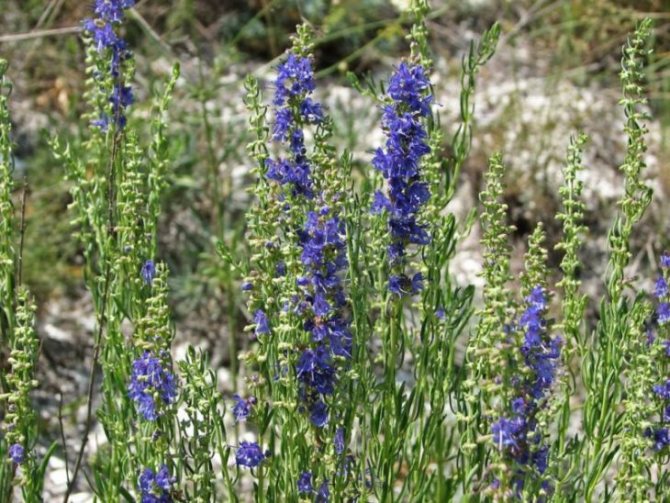

Hyssop in cooking
The deciduous part of the plant has a slight bitterness and a spicy aroma of ginger with an admixture of sage. Hyssop is used as a condiment to help digest food better. The spice can be used as an addition to any first and second courses, salads and cheeses.
- Hyssop syrup. A cough remedy that helps the bronchi work can be prepared from strained infusion. To do this, you need to brew 100 g of grass in one liter of water and add one and a half kg of sugar, boil until thick. Reception of such a remedy is possible 3-5 times a day, one tablespoon at a time.
- Broth. Hyssop as a decoction helps with muscle and joint pain, digestive disorders, hemorrhoids. The product is prepared from 100 grams of dried herbs, brewed in a liter of boiling water. After 5 minutes, you can remove the broth from the heat and add 100-150 g of sugar, strain. You need to take half a glass every day.
- Tincture of hyssop. To prepare the tincture, you need to take diluted alcohol or vodka and pour the dried hyssop in a 1: 5 ratio.The plant is infused from 2 to 4 weeks with regular shaking of the liquid. To rinse the mouth, the tincture is used at 30 drops per 100 g of water; for internal use, 40-50 drops should be used.
- Essential oil. Medicinal hyssop with white flowers has a high concentration of essential oils. The remedy is good for asthma, reducing attacks and relieving spasms. 5 drops of hyssop oil can be added while taking a bath, before mixing it with honey or sour cream.
Attention! Exceeding the dosage of essential oils is contraindicated, it is a concentrated product that can be harmful.
Application methods
Due to the inclusion of essential oils, vitamins and microelements in the product, hyssop can be used in cooking, cosmetics, and alternative medicine.
In traditional medicine
The healing properties of the herb are used in Europe to create drugs for the treatment and prevention of diseases of the digestive tract:
- gastritis with low acidity of gastric juice;
- increased appetite;
- flatulence;
- chronic enterocolitis;
- constipation.
Alcohol solutions based on plant flowers are used externally for rubbing joints, for inflammation of the bronchi.
In Russia, preparations based on the extract are not manufactured. Pharmacies sell herbal preparations containing the leaves and flowers of the plant. The packaging indicates the composition of the hyssop, useful properties and contraindications, a photo of the appearance.
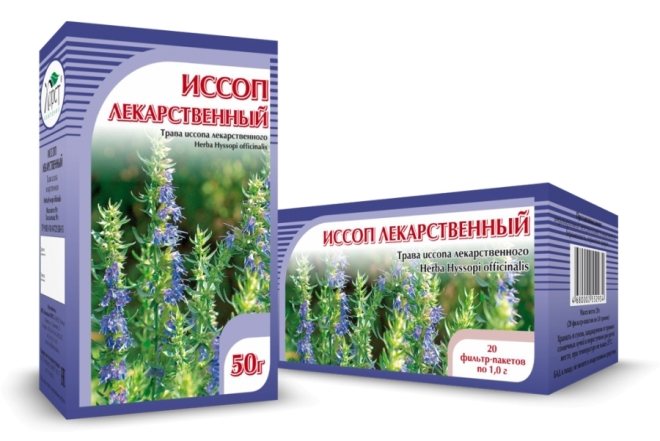

for the preparation of medicinal products, you can use raw materials from the pharmacy or prepared yourself
Traditional medicine recipes
In the framework of alternative medicine, both external and oral administration of the herb is allowed. Decoctions, infusions, compresses and tinctures are prepared from medicinal raw materials. In this case, the funds are used strictly according to the instructions. Abuse can cause digestive problems or skin irritation. Recipes:
| Name of funds | Ingredients | Cooking method |
| Skin diseases | · 1 tbsp. l. hyssop; · 2 tbsp. l. chamomile flowers; 300 ml of boiling water; · 2 tbsp. l. horsetail. | The herbs are mixed and poured with boiling water, insisted for 2 hours. After that, filter the infusion through 3-4 layers of gauze. Compresses are impregnated with the solution, which are applied to the skin 2 times a day for dermatitis, purulent wounds, moist eczema. |
| Infusion for constipation | · 1 tbsp. l. dried leaves; 0.5 liters of boiling water. | The plant is poured with hot water, after which it is allowed to brew for 3 hours. The finished product is drunk 3 times a day between meals, 150 ml each. |
| For eczema | 1 liter of hot water; · 100 g of dried flowers and leaves of hyssop. | Pour boiling water over the plant and wait for the solution to cool completely. After that, the liquid is filtered, poured into a bath, which is taken daily for 30 minutes. The course lasts 3 weeks. |
| Influenza, tonsillitis, colds | · 1 tbsp. l. St. John's wort blue; · 1 tbsp. l. anise seeds; 2 figs; 1.5 liters of water; 10 tsp mountain honey; · 1 tbsp. l. fennel seeds; · 4 tbsp. l. raisins. | The figs are finely chopped, then mixed with herbal ingredients and poured over with water. The mixture is brought to a boil, then cooked over low heat for 40 minutes. The broth is filtered and mixed with honey. The remedy is taken in 1 tsp. up to 5 times a day. |
| Bronchial asthma | · 2 tbsp. l. blue hypericum; · 0.5 liters of hot water. | The herb is poured with boiling water, waiting for complete cooling. Before use, the agent is filtered and heated. Warm infusion is drunk 30 minutes before meals instead of tea for a month. |
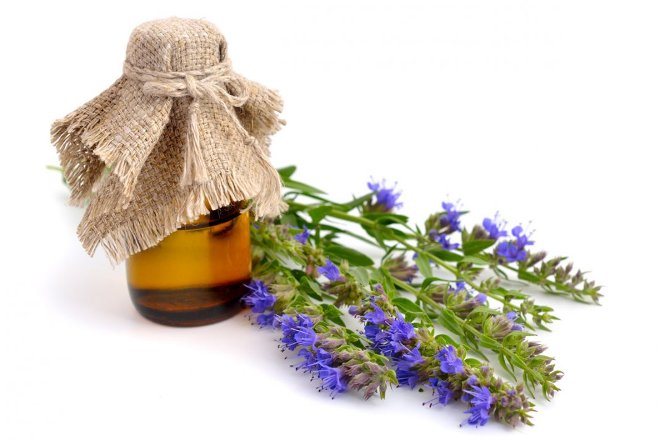

hyssop essential oil has concentrated in its composition a lot of biologically active components inherent in the plant, and is actively used for cosmetic purposes
In cosmetology
Herbal extract and spice essential oils are used for hair and skin care. Vitamins and minerals in cosmetics have the following effect:
- allow you to stop hair loss;
- give curls a well-groomed look;
- improve the blood supply to the follicles, thereby accelerating hair growth, they become strong and silky;
- eliminate acne;
- improve complexion;
- antioxidants in the product improve the synthesis of collagen and elastin in the subcutaneous fat, helping to reduce expression lines.
If for some reason it is not possible to purchase ready-made products, you can add 2 drops of oil to shampoo or day face cream.
Among professional care products, hydrolat (hyssop water) is especially popular. It is used together with scrubs and masks. The active substance has an anti-inflammatory and wound healing effect, therefore it is more often used against acne. Hydrolat is applied to the hair along its entire length, leaving it for 15 minutes to strengthen its structure and prevent split ends. Irritation of the skin on the body is eliminated by rubbing - for this, cotton wool or a medical swab is moistened in a solution of hydrolate and the affected area is wiped.
Hyssop: photos, types, useful properties, cultivation and application
Hyssop medicinal has long been known for its medicinal and spicy qualities. It belongs to the Lamb family. It grows naturally in Eurasia and Africa. In many countries, it is grown as a medicinal and spicy crop. Due to its decorative appearance, it is widespread among flower growers - it is often planted in flower beds and flower beds. It is also an excellent melliferous plant.
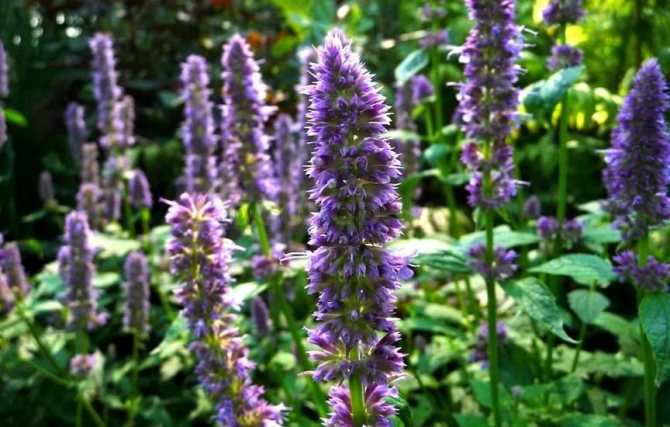

It is a herbaceous perennial branched shrub 20-80 cm high, with a taproot, woody root. On its numerous tetrahedral stems, opposite, almost sessile, lanceolate leaves are densely located. In the lower part of the stem, they are larger, and as they move to the top, their size gradually decreases.
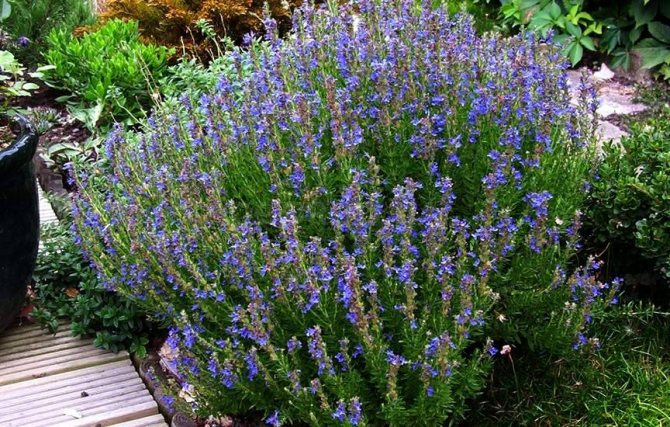

It blooms in the middle of summer with bright blue double-lipped flowers, collected in beautiful oblong spike-shaped inflorescences located at the ends of the stems. There are plants with purple, pink, white flowers, which are much less common. After flowering, nut-like seeds of a dark brown color ripen.
Hyssop varieties for cultivation in the country
At the dacha, medicinal hyssop can be grown as a spice-flavoring culture, an ornamental shrub and a honey plant for beekeepers.
Varieties of hyssop medicinal for the pharmacy garden
For the purpose of using in the form of medicinal decoctions, tinctures, teas, it is best to grow medicinal hyssop in a pharmacy bed, where no fertilizers are applied and, most importantly, the plants are not sprayed with pesticides. Recommended for growing varieties:
- Pleasing Semko;
- Nikitsky white;
- Dachny;
- Healer;
- Lapis lazuli;
- Hoarfrost and others.
Plants bloom with blue, bright blue and white flowers.
Based on the results of chemical analysis, some researchers report that plants with blue flowers contain the largest amount of essential oils than white and pink-flowered plants. According to other sources, varieties with white flowers contain the maximum amount of essential oils during flowering, the minimum - with pink flowers and intermediate - with blue and blue.
Description of culture
The unpretentious plant pleases all summer with its flowering and fragrant aroma. Hyssop grass grows in the steppe and rocky terrain, is widespread throughout central Russia, in the south of Siberia and in the regions of the Caucasus, prefers a warm climate.
Hyssop is a branched shrub with elongated green leaves. Wild species reach half a meter, and cultivated varieties grow up to one meter. The flowers are irregular in shape and are collected in a spike-shaped inflorescence. They can be white, pink or blue.
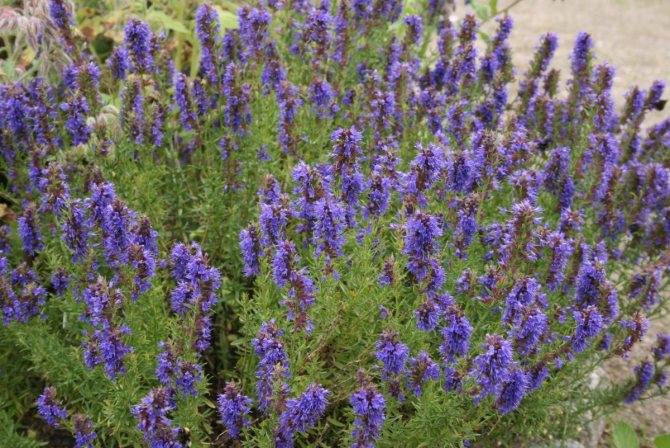

Hyssop herb
Note! With age, the perennial begins to bloom less violently, so every 3-5 years the plantings should be updated with new specimens.

